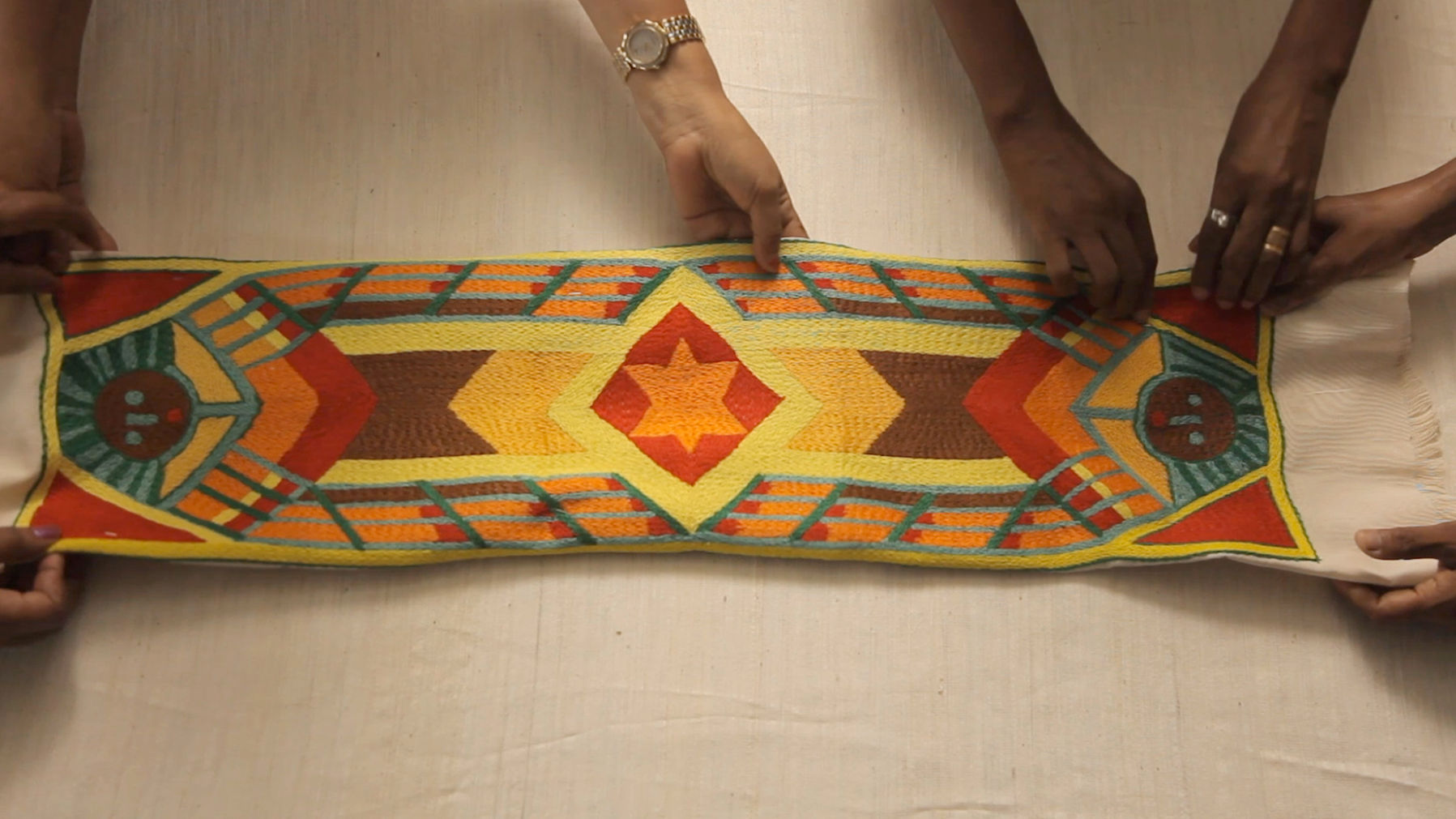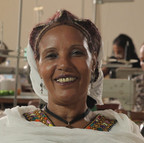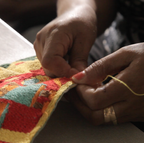Ethiopian Curtain of the Ark
Revolving around the Ethiopian epic of Kebra Nagast, which tells the story of the cross-cultural encounter between the Queen of Sheba and King Solomon, the project imitates ethnographic display modes in an attempt to raise questions about the notion of authenticity.

Ethiopian Curtain of the Ark, installation view at Herzliya Museum of Contemporary Art, 2012
Ethiopian Curtain of the Ark features a model of the Ark of the Covenant wrapped in an Ethiopian embroidered fabric and a short documentary. The project's first display at a contemporary art museum was followed by ethnographic exhibitions, featuring Ethiopian artifacts. We often take for granted displays of folk and historical museums, as if they were scientific truths. In reality, our identity is always split with contradictions, there is no room for purity. The project encourages the viewer to be suspicious and raise questions while walking a tightrope between art and history, fiction and truth, authenticity and forgery.

Ethiopian Curtain of the Ark, Handmade embroidery, Hand loom woven cotton fabric, 6.5 x 8', 2012
The 16 panels depicted in the embroidery provide a visual narrative of the encounter between the Queen of Sheba and King Solomon. They present an abridged version of the Ethiopian story, edited by the artist, and show the journey of the Queen and later on of their mutual son, Menelik.






















The Love Story of the Queen of Sheba and King Solomon (Excerpts), Video 6:32 minutes, 2012, Israel
The embroidery was fabricated at Almaz—a traditional Ethiopian embroidery workshop based in Lod, Israel. In the video, Aviva Almaz Rachamim, the manager of the factory, tells the canonical story of the encounter between the Queen of Sheba and King Solomon. Rachamim recites the popular fable in Amharic, while the needleworkers work on the embroidery.

Ethiopian Curtain of the Ark -- Drawings, installation view
















Ethiopian Curtain of the Ark (A series of 16 Preparatory drawings), Acrylic on paper, 11 x 14" each, 2012
In Ethiopian Curtain of the Ark, Michaeli uses the visual language of folk Ethiopian art, implementing the shapes, colors, and codes of this traditional craft without copying s specific references.
This project was commissioned by the Herzliya Museum of Contemporary Art.